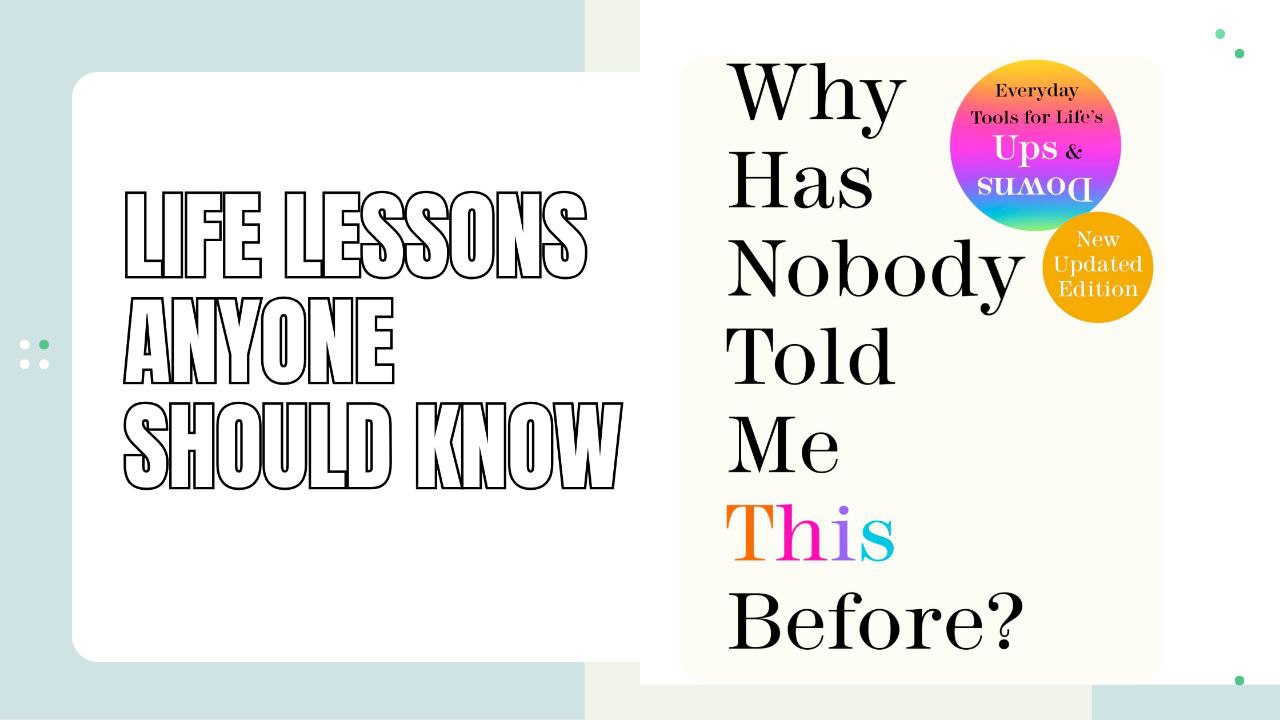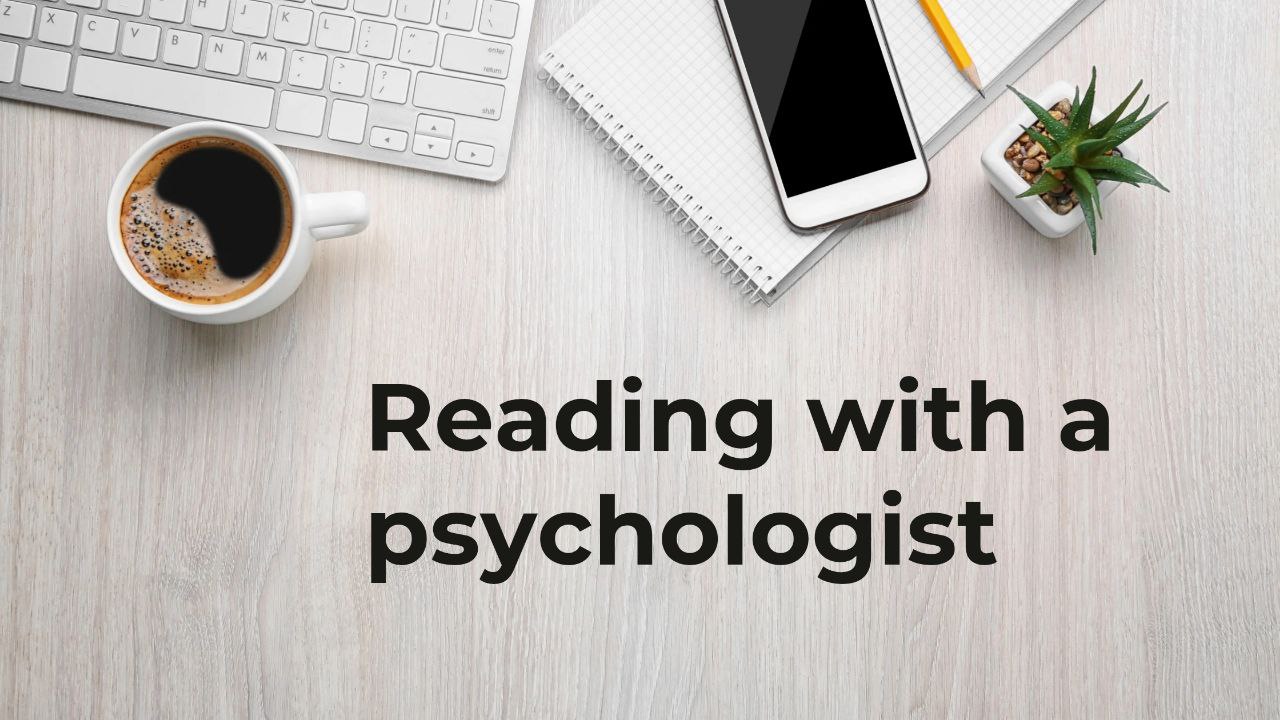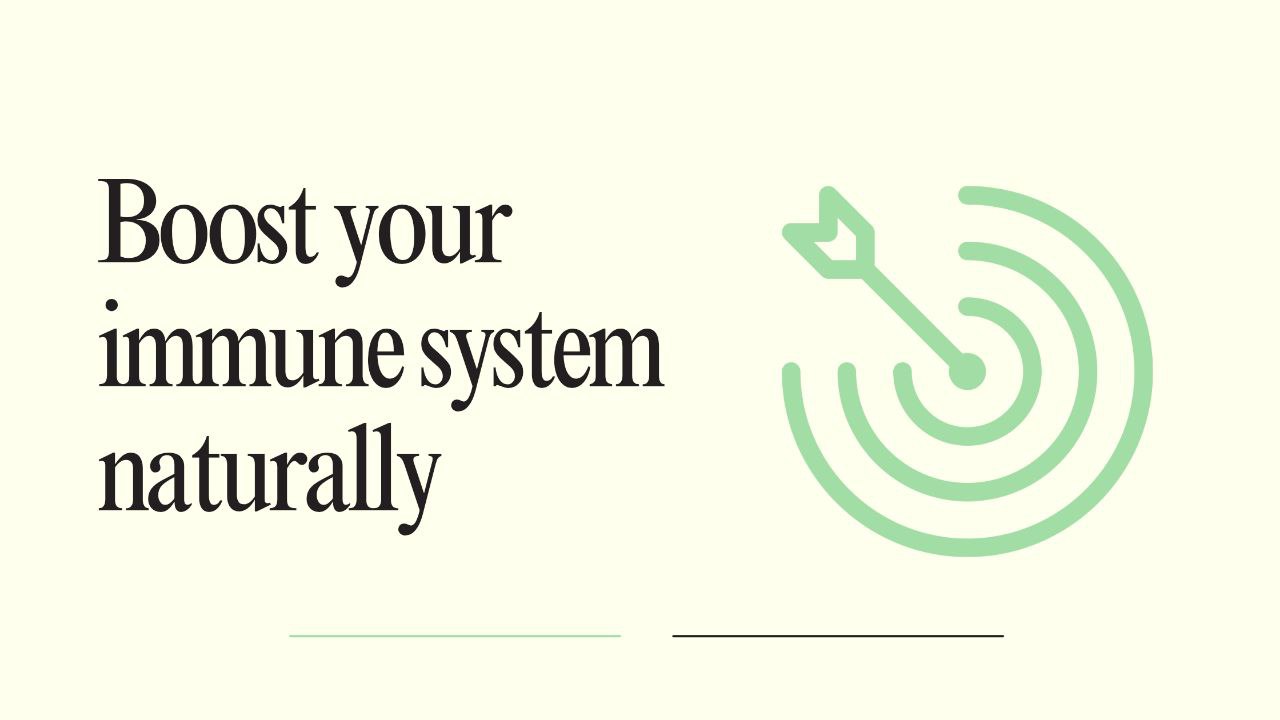Introduction: What This Book Is All About
Have you ever been through something hard and thought, “Why Has Nobody Told Me This Before?” That‘s what Dr. Julie Smith‘s book enables. She‘s a clinical psychologist with the mission of writing this book to explain to you everything important she discovered working with individuals on their mental wellbeing. The book is in a way a toolkit for navigating day–to-day challenges such as stress, anxiety, depression, low self-esteem, and others. The book is written in straightforward English, as if chatting over a cup of coffee with a friend.

Title: Why Has Nobody Told Me This Before?
Author: Dr. Julie Smith
Published: January 11, 2022
Publisher: HarperOne
Pages: 368
Language: English Author
Background: Dr. Julie Smith is a clinical psychologist with over a decade of experience. She is known for her accessible mental health content on social media and YouTube.
Let‘s go through the most helpful ideas from this book and how they can make your life easier and happier.
1. Knowing Your Feelings
One of the strongest lessons that the book teaches us is that feelings are not the enemy. Most of us learn throughout our lives that it is wrong to be angry or sad and that something must be done to change that immediately. But Dr. Smith teaches us that feelings are a healthy, normal part of being human. They are an alarm from our brain that tells us something that is important to us.
Example: If you‘re nervous prior to making a speech, it‘s maybe because you genuinely want to do well. Instead of fighting the fear, embracing its role reduces fear and gives you the capacity to respond more smoothly.
2. Stress and Anxiety Management
Anxiety has the potential to be overwhelming and out of control. It is normally caused by worrying thoughts and, before you realize it, you have physical symptoms like palpitations or gasping for air. Dr. Smith defines anxiety as a normal response to feeling threatened, but the threat is not real.
As part of the management of anxiety, the brain has to be conditioned to come back to the present. Dr. Smith suggests the use of grounding skills using the senses to break the cycle of hyperarousal thinking.
Example: If your brain is racing with worry, attempt to identify five things you can see, four things you can touch, three things you can hear, two things you can smell, and one thing you can taste. This activity calms the brain by concentrating your mind on what is real here and now.
3. Coping with Negative Thoughts
We all have this internal voice within us that always criticizes anything we do. Sometimes this internal voice is pleasant, but occasionally it is ruthless and judgmental. Dr. Smith discusses the way negative self-talk can control our beliefs and actions in detrimental ways.
She invites readers to critically scrutinize their negative thoughts by reviewing the evidence.
Example: When you find yourself thinking, “I’m a failure because I didn’t get that job,” you ask yourself, “What evidence do I have that I’m a failure?” You might observe that you worked diligently, learned a few new things, and one rejection doesn’t make you anything at all. Reframing makes you more rational and kinder to yourself.
4. How to Set Boundaries
Most people struggle with establishing boundaries because they don’t want to disappoint others. But as Dr. Smith states, healthy boundaries are essential to well-being. Without them, we become drained, resentful, or overwhelmed.
Boundaries can be physical, emotional, or temporal. They establish what we are comfortable with and protect our space.
Example: If you have a friend who calls you late at night over and over again to talk about their problems and it exhausts you, a boundary like, “I love you, but I only talk during the day,” helps you maintain your energy without being offensive.
5. Handling Sad Days
Not all days will be great, and that’s okay. Dr. Smith lets readers know it’s okay to be sad. Some days you‘ll be blue for no reason, and you’re not broken.
Instead of trying to force yourself to be happy, she recommends accepting the low mood and looking after yourself while you’re in it.
Example: On a gloomy day, rather than trying to be upbeat, you could opt to go for a walk, have a hot drink, or watch a soothing program. Allowing yourself to be nice to your mood allows it to go by more smoothly.
6. Building Your Self-Confidence
Confidence is not something you possess or lack. It‘s something you can build over time. Dr. Smith demonstrates that confidence grows when we do, even if we don’t know what we are doing.
It makes the brain adapt to deal with uncertainty.
Example: If you are afraid of public speaking, starting with a small audience or even speaking to a recorder is a good place to start. All little wins make you more confident and less scared in the long run.
7. Building Resilience
Resilience is the ability to bounce back from adversity. It’s not pain avoidance but learning how to respond to it constructively. Dr. Smith emphasizes that resilience is not born; it‘s learned over a lifetime.
Example: Take the case of losing a job. A resilient response would be to permit yourself to mourn, and then gradually begin to do things such as refresh your resume or contact contacts. These little things build momentum and hope anew.
8. Being Kind to Yourself
Self-compassion runs as a golden thread throughout this book. We are all more accepting of other people than we are of ourselves and set unrealistically high expectations for ourselves.
She encourages readers to be as kind to themselves as they would to a friend.
Example: If your friend did something wrong at work, you can say to her, “Everyone makes mistakes, it’s fine.” Say it to yourself too. Writing down nice words in a journal is also a good way to develop self-kindness as a daily habit.
Conclusion: Why Has Nobody Told Me This Before?
“Why Has Nobody Told Me This Before?” is full of useful tools anyone can use, regardless of age or situation. It‘s not a fix-it book, but rather a book about understanding yourself and living more mindfully, with more strength and compassion.
Whatever it is you are struggling with – anxiety, low mood, self-doubt, or stress – this book is a gentle and helpful friend. With Dr. Julie Smith’s extensive experience as a psychologist, and writing so clear and compassionate, this book is like having a one-to-one therapy session. It is a must-read for anyone who wants to care for their mental health in a real and sustainable way.







